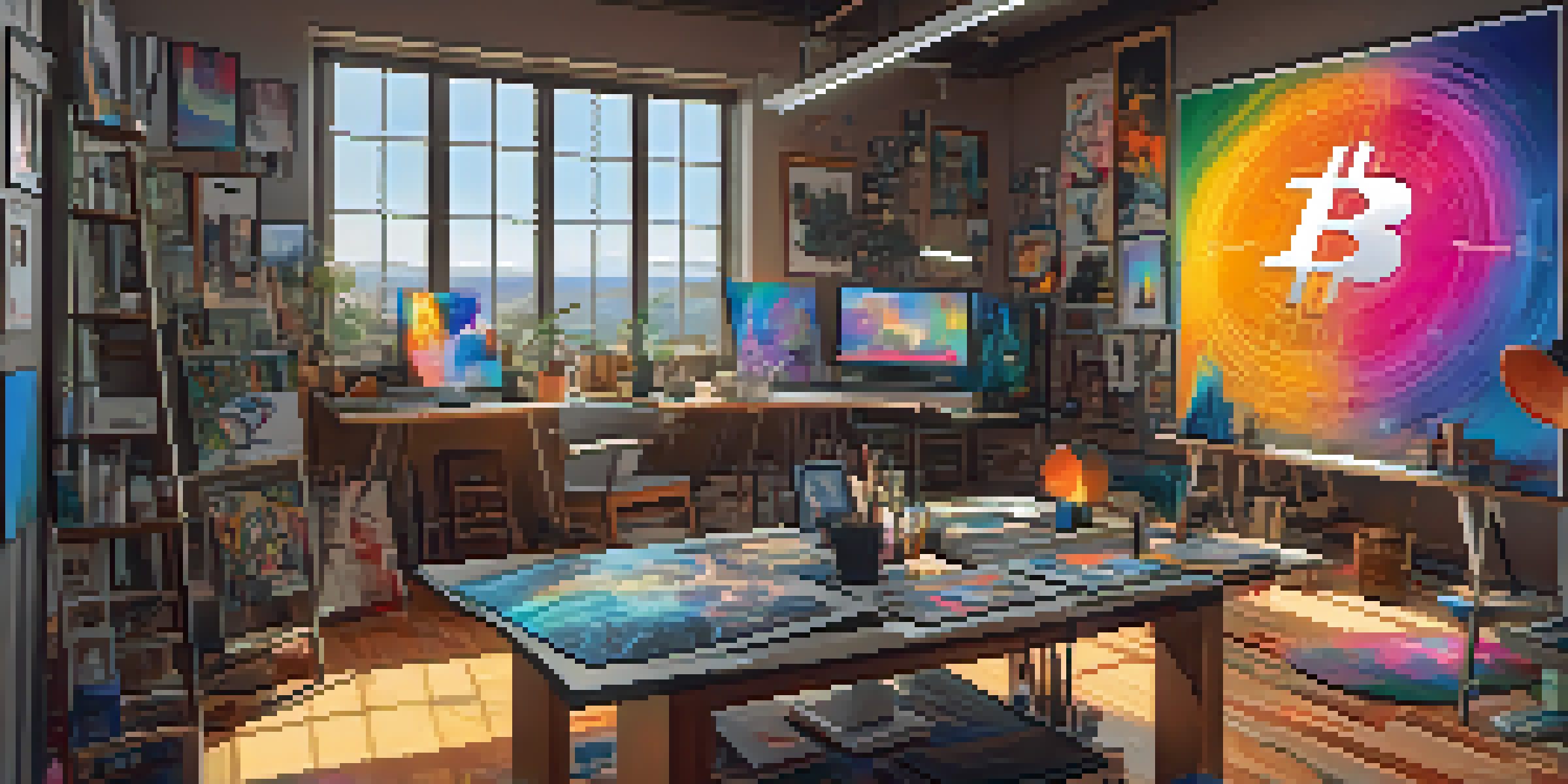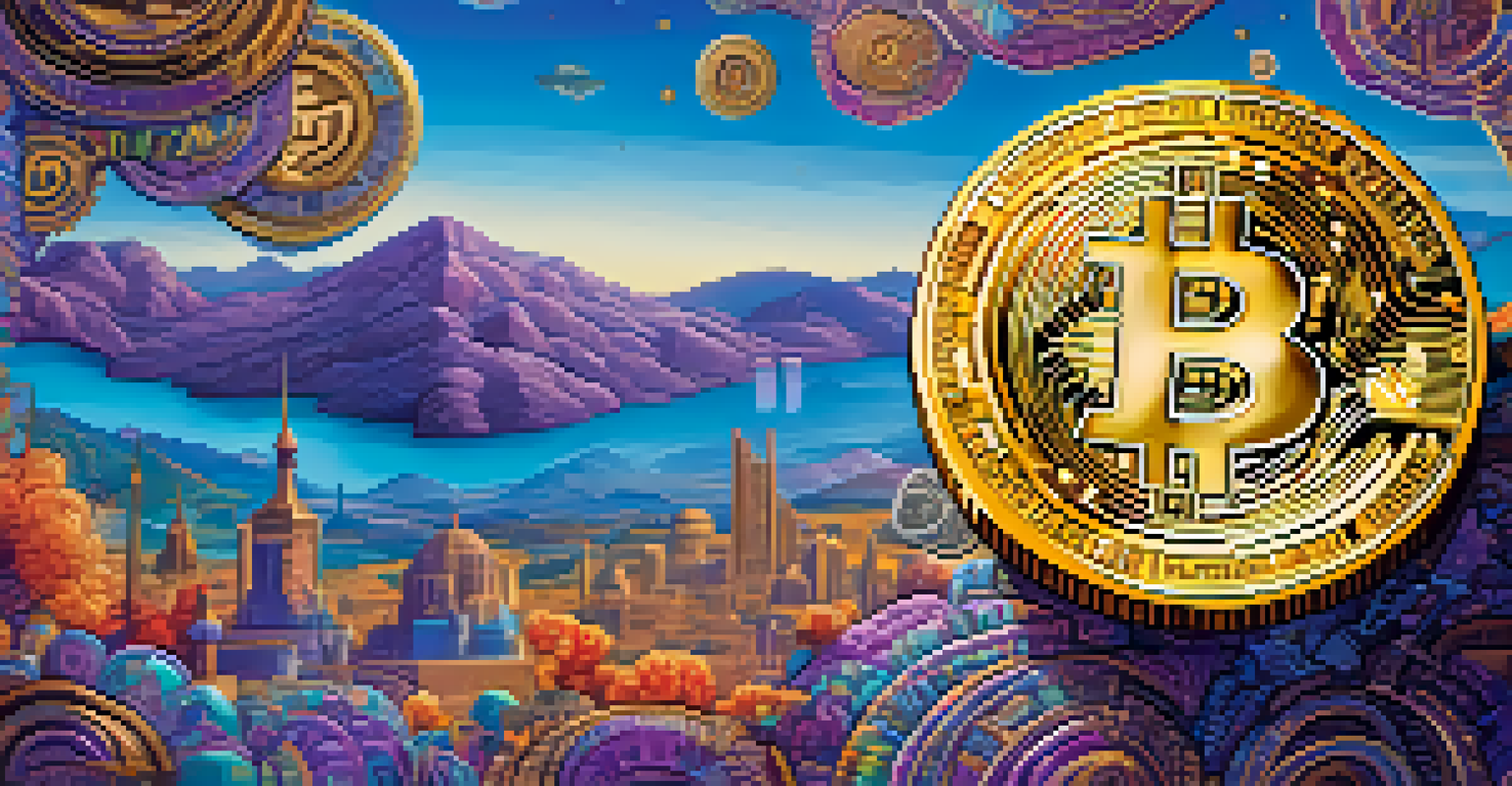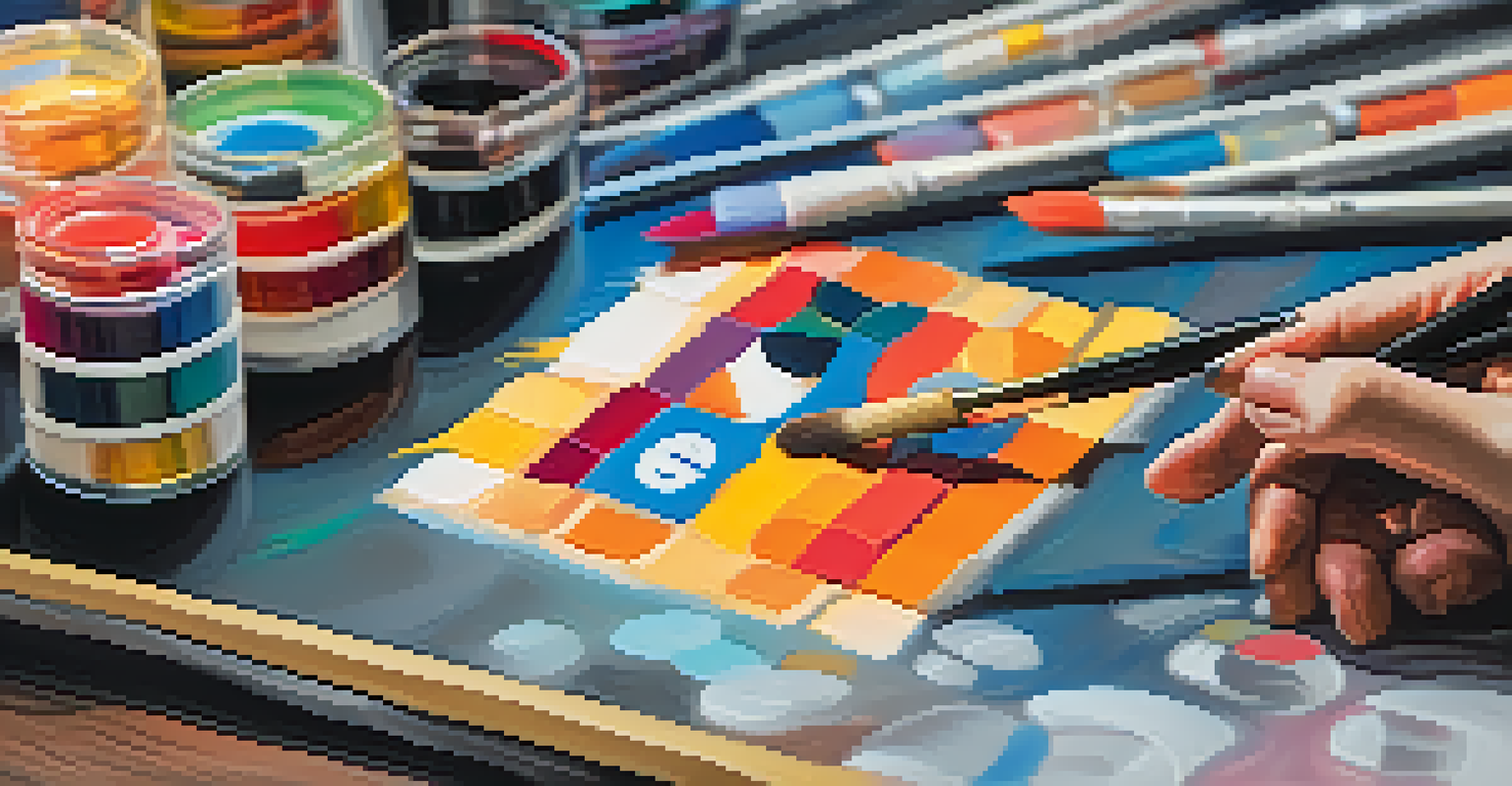The Intersection of Bitcoin and Art: A Cultural Revolution

Understanding Bitcoin and Its Unique Value Proposition
Bitcoin, often referred to as digital gold, is a decentralized cryptocurrency that has gained immense popularity since its inception in 2009. Unlike traditional currencies, it operates on a technology called blockchain, which ensures transparency and security. This unique structure allows for peer-to-peer transactions without the need for intermediaries, making it a revolutionary financial tool.
Bitcoin is a technological tour de force.
One of the key aspects of Bitcoin is its finite supply—only 21 million coins will ever exist. This scarcity gives it intrinsic value, akin to rare art pieces that are highly sought after. As artists and collectors recognize Bitcoin's potential, its influence on the art world continues to grow.
Moreover, Bitcoin challenges the traditional art market, which often involves high fees and middlemen. This democratization of art transactions allows artists to receive direct compensation for their work, paving the way for a more equitable art ecosystem.
NFTs: The Bridge Between Bitcoin and Digital Art
Non-fungible tokens (NFTs) have emerged as a revolutionary application of blockchain technology, allowing artists to tokenize their digital creations. Unlike Bitcoin, which is fungible and can be exchanged for any other Bitcoin, NFTs represent unique assets, providing proof of ownership and authenticity. This innovation has opened up new avenues for artists to monetize their work.

NFTs have gained tremendous popularity, with artists like Beeple selling digital artworks for millions of dollars. This phenomenon has sparked conversations about the value of digital art versus traditional forms. Collectors are now eager to invest in NFTs, viewing them as both a cultural statement and a financial asset.
Bitcoin Empowers Artists Directly
The decentralized nature of Bitcoin allows artists to have more control over their work and engage directly with their audience.
As the NFT market grows, it blurs the lines between art, technology, and finance, making it an exciting space for both creators and investors. The intersection of Bitcoin and NFTs represents a cultural revolution, challenging our perceptions of ownership and value.
Decentralization: Empowering Artists and Collectors
The concept of decentralization is at the heart of both Bitcoin and the NFT movement. By removing gatekeepers, artists have more control over their work and how it's sold. This shift has empowered creators to explore new forms of expression and engage directly with their audience, fostering a deeper connection.
Art is not freedom from discipline, but disciplined freedom.
For collectors, this decentralization means access to a wider variety of art without the constraints of traditional galleries. They can discover emerging artists from around the world and support them directly through platforms that facilitate Bitcoin transactions and NFT sales. This new model promotes diversity in art, allowing for a richer cultural landscape.
Additionally, the transparency of blockchain technology ensures that artists receive royalties on secondary sales, which is often not the case in traditional art markets. This ongoing revenue stream encourages artists to keep creating and innovating, further enriching the art scene.
Bitcoin's Role in Art Fundraising and Philanthropy
Bitcoin is also making waves in the realm of art fundraising and philanthropy. Many artists and organizations are now accepting Bitcoin donations for various projects, enabling supporters to contribute in a modern and efficient way. This method not only streamlines the donation process but also attracts a new generation of art patrons who are already familiar with cryptocurrency.
Moreover, art auctions that accept Bitcoin have emerged, allowing collectors to participate in a more dynamic bidding process. This flexibility can lead to higher bids and more successful fundraising efforts, ultimately benefiting artists and cultural institutions alike. Such initiatives highlight the potential of Bitcoin to transform how we perceive and support the arts.
NFTs Revolutionize Digital Art Sales
Non-fungible tokens (NFTs) provide a unique way for artists to monetize their digital creations by proving ownership and authenticity.
As more charitable organizations embrace cryptocurrency, we can expect a shift in how art philanthropy operates. This trend encourages innovative projects that may not have received funding through traditional channels, enriching the broader cultural landscape.
The Cultural Impact of Bitcoin in the Art World
The intersection of Bitcoin and art is not just about transactions; it’s reshaping cultural narratives. As artists explore themes of digital ownership, scarcity, and value, they challenge traditional art concepts. This ongoing dialogue encourages audiences to rethink what art can be and how it relates to technology and modern society.
Furthermore, Bitcoin's rise has inspired a new wave of artistic expression, with creators incorporating blockchain and cryptocurrency themes into their work. This fusion of technology and art invites viewers to engage with complex ideas about the future of finance, ownership, and creativity. It's a cultural movement that resonates with a tech-savvy generation.
Ultimately, Bitcoin serves as a catalyst for change, prompting discussions about the role of art in a digital age. By embracing this new medium, artists are not only redefining their creative practices but also influencing cultural trends across various sectors.
Challenges and Criticisms of Bitcoin in Art
Despite the excitement surrounding Bitcoin and art, several challenges and criticisms persist. One major concern is the environmental impact of Bitcoin mining, which consumes significant energy resources. As artists and collectors become more aware of sustainability issues, they may question the ethical implications of supporting a currency with a high carbon footprint.
Additionally, the volatility of Bitcoin prices can create uncertainty for artists and collectors alike. While some see potential for profit, others worry about the risks associated with fluctuating values. This unpredictability can deter established artists from fully embracing Bitcoin as a payment method or medium of exchange.
Bitcoin Enhances Art Fundraising Efforts
Accepting Bitcoin donations and auction bids modernizes the fundraising process, attracting new supporters and increasing potential revenue for artists and institutions.
Moreover, the NFT market has faced scrutiny for issues related to copyright infringement and fraud. As the space matures, it's essential for participants to navigate these challenges thoughtfully to ensure a fair and sustainable ecosystem for all involved.
Looking Ahead: The Future of Bitcoin and Art
As we look to the future, the relationship between Bitcoin and art is poised to evolve further. With advancements in technology and a growing acceptance of cryptocurrencies, we may see more artists adopting Bitcoin as a primary medium. This shift could lead to innovative forms of artistic expression and new ways to engage audiences.
Additionally, as the art world becomes increasingly globalized, Bitcoin can serve as a unifying currency that transcends borders. This potential for global transactions may foster collaboration between artists from diverse backgrounds, enriching the cultural dialogue and promoting cross-cultural understanding.

Ultimately, the intersection of Bitcoin and art holds promise for a vibrant cultural revolution. By embracing this transformation, artists and collectors can shape a future where creativity and technology coexist harmoniously, paving the way for groundbreaking artistic endeavors.